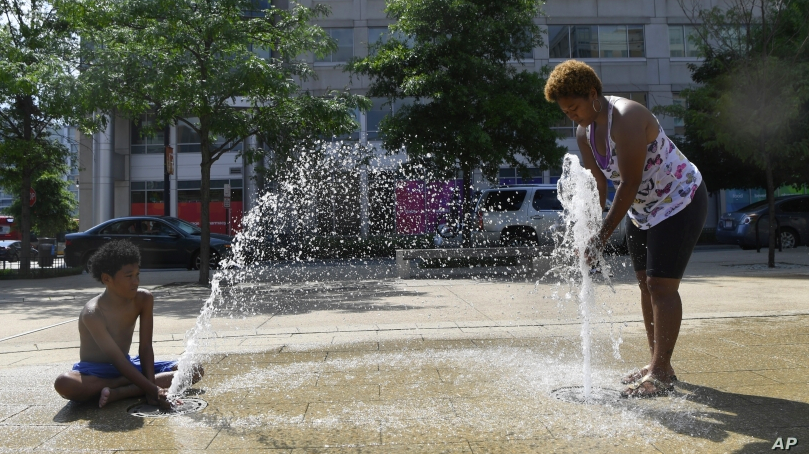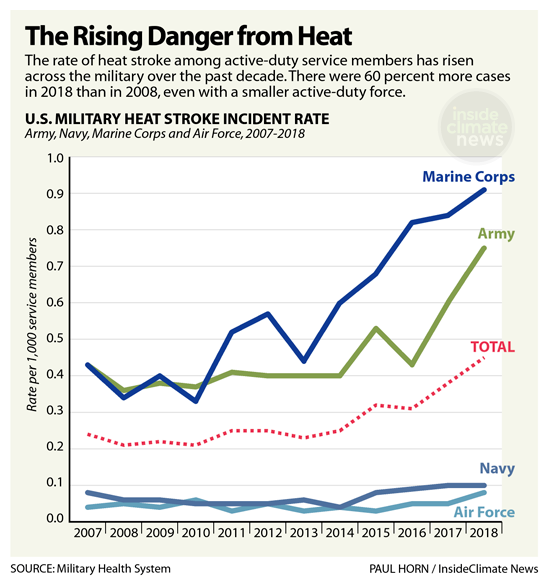
A new Defense Department report on the security impacts of climate change provides startling evidence of the impacts of climate change on military readiness and the welfare of servicemembers — health impacts from heat have already cost the military as much as nearly $1 billion from 2008 to 2018 in lost work, retraining and medical care, according to a new report by NBC News and Inside Climate News. Similarly, Ecowatch reported that based on the data contained in the Union of Concerned Scientists’ recent report entitled “Killer Heat,” African Americans have been disproportionately affected by extreme heat — approximately 40 percent of the total U.S. African American population vs. 3.0. percent of the U.S. general population will be affected as a result of global warming.
Why This Matters: You might not think of poor and minority communities as having that much in common with members of the military, but in fact, both groups lack the power to alter their circumstances when it comes to exposure to extreme heat. Low income and minority victims are trapped by their lack of means, but soldiers and sailors are also powerless and trapped in the heat during training, at the mercy of their commanders. With this knowledge of the disproportionate impacts, policymakers and military commanders should do more to ensure that both populations are better protected from heat stress. The military, in particular, should raise awareness among commanders of the dangers of heat illness because there was evidence in the NBC/Inside Climate News report that a disregard for heat safety rules led to the deaths of service members.
Service Members At Greater Risk Than a Decade Ago
- “InsideClimate News and NBC News spent the last nine months investigating heat deaths and heat-related illnesses in the military and the Pentagon’s uneven efforts to safeguard warfighters.”
- “The investigation found that despite acknowledging the risks of climate change, the military continues to wrestle with finding a sustainable, comprehensive strategy for how to train in sweltering conditions.”
- “In 2008, 1,766 cases of heat stroke or heat exhaustion were diagnosed among active-duty service members, according to military data. By 2018, that figure had climbed to 2,792, an increase of almost 60 percent over the decade.”
- “All branches of the military saw a rise in heat-related illnesses, but the problem was most pronounced in the Marine Corps, which saw the rate of heat strokes more than double from 2008 to 2018, according to military data.”
African Americans In the South Suffer From the Heat
The Union of Concerned Scientists’ Adrienne Hollis and Dr. Kristy Dahl, a co-author of the Killer Heat report, examined the average number of days with a heat index above 105°F in counties with an African Americans population of 25 percent or more as compared to those counties with fewer than 25 percent African American. They found that “counties with large African American populations are exposed to extreme temperatures 2-3 more days per year than those counties with smaller African American populations. And by midcentury, the expectation is that those same counties would experience about 20 more extreme heat days per year.”

July 24, 2019 » african americans, extreme heat, heat, heat illness, military

